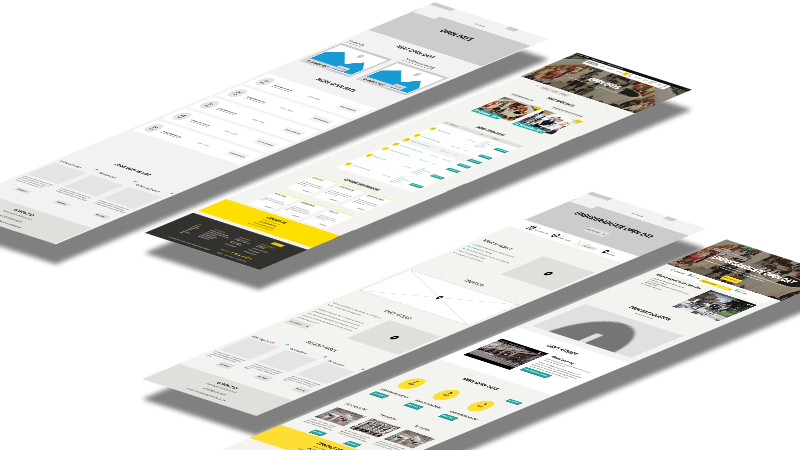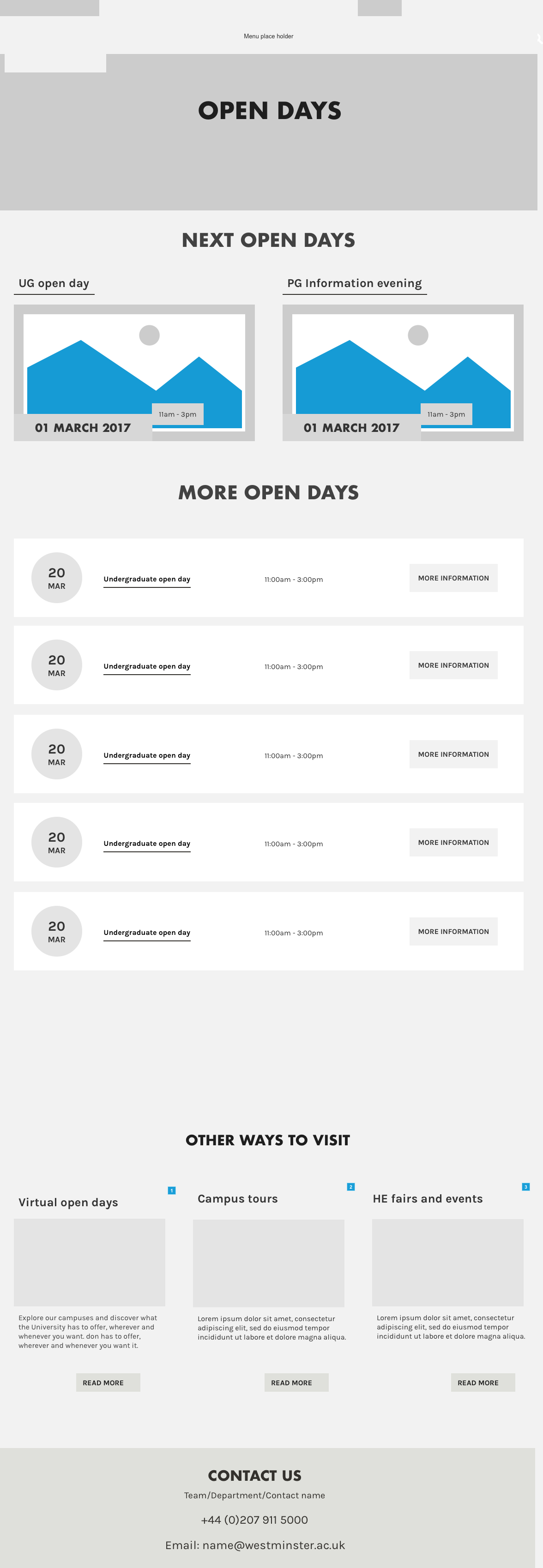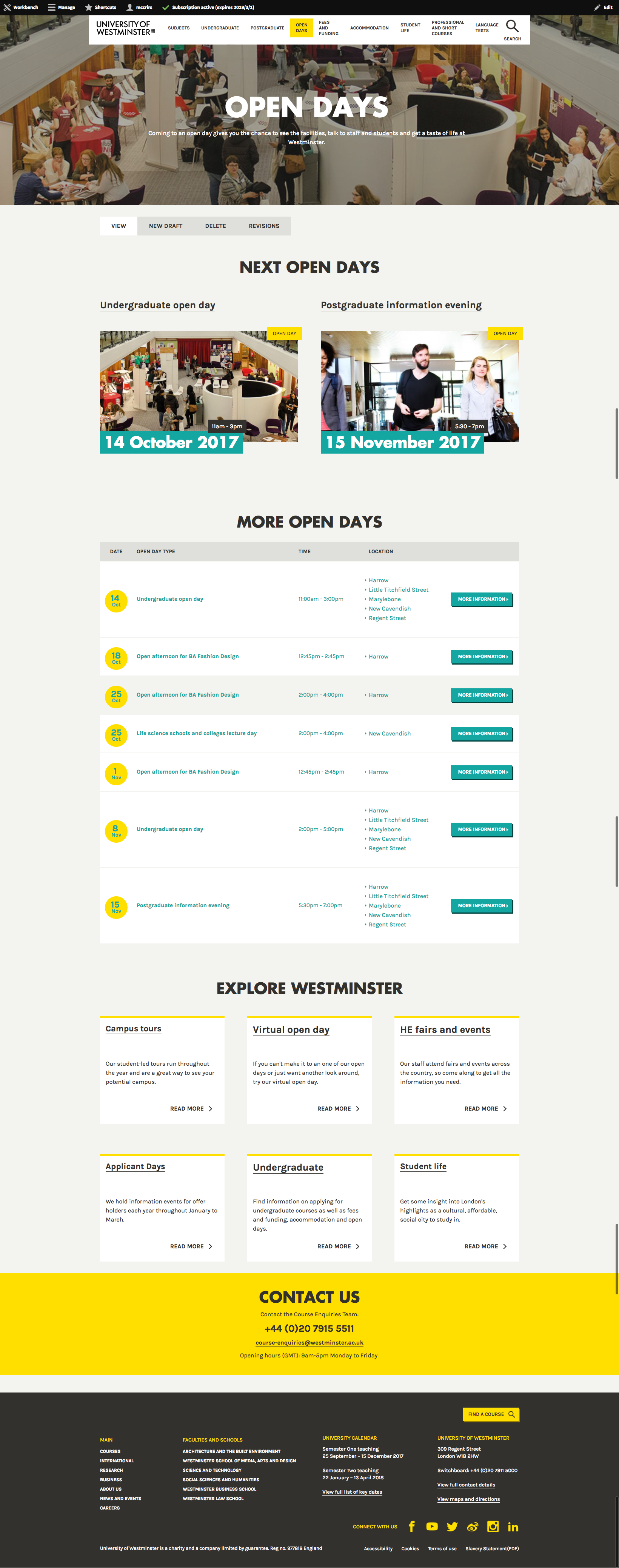
Open days
Improving one of the most important steps in the student journey
Open Days
The Goal
To redesign the open days listing page and event pages, making them fully responsive and aligned with the new online identity, with the aim of increasing conversion rates.
The Challenge
The organization operates a single event across multiple locations, requiring a design that clearly communicates the address/location. This involved designing new components not present in the pattern library and introducing new functionality.
My Role
As the UX Designer and creative lead in an 8-person Scrum team, I ensured that user feedback was incorporated into designs validated through user testing.
Discovery
Stakeholder Interviews
I conducted interviews with stakeholders to understand their goals and expectations for the redesign. This helped me to prioritize the design elements and content that would be most beneficial to the organization and incoming students.
Touchpoint analysis
Although the main goal was to increase the attendance, we also wanted to improve the overall user experience. I mapped out the user journey to identify touchpoints where we could improve the experience and increase the likelihood of a user booking an open day. This analysis helped me to identify that the booking process, that was ourside of the website, was a key area for improvement.
Content Analysis and Sector Benchmarking
Before starting the design, I analyzed competitors' websites to understand their user journeys and the information/content they displayed. This analysis, combined with our user personas, informed my suggestions for new content and allowed me to start wireframing.
Usability Testing
We conducted user testing on our current pages to confirm existing insights and gather additional feedback. We tested on incoming student at open days and new students, both who have just been through the process and could hopefully give us some good insight into areas of imporvement.
Validation and Usability Testing
Preparation
- Developed a detailed user test script containing an introduction, scenarios, tasks, and questions, all informed by user personas.
- Trained team members on conducting unbiased guerrilla testing with current students on campus.
Execution
- Conducted usability tests on users with my team members, following a tight script to ensure consistency.
- Collected feedback on the overall design and content, identifying potential issues with CTAs and missing elements/components/content.
Results
- Received valuable feedback that led to design adjustments and the addition of new content to assist prospective students in identifying the right location for their chosen subject.
Post-Launch Analysis
We compared two key events in the undergraduate recruitment calendar before and after the redesign to measure impact.
Summary for 7 March 2018 UG Open Day
- 208% increase in bookings compared to the same event in 2017.
- 63% increase in attendance numbers compared to the 2017 event.
Summary for 10 March 2018 UG Open Day
- 71% increase in bookings compared to the same event in 2017.
- 23% increase in attendance numbers compared to the 2017 event.
Traffic to the site did not increase by the same margins, indicating that the design changes were the primary factor in improved performance.



